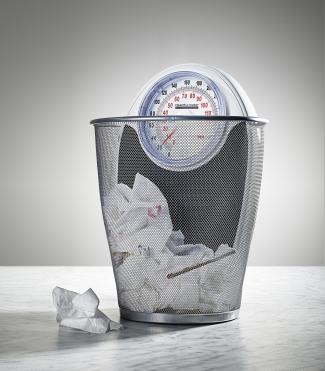AARP Eye Center
2 Numbers That Matter Most After 50
By Barbara Hannah Grufferman, August 12, 2013 10:05 AM

After turning 50, I made a life-changing decision to never again focus on numbers that are irrelevant to my happiness, health and well-being, and only embrace those that are.
Age, for example, is a measurement of life of which I make note of and celebrate (with joy!) each year. However, it does not define me, as it once did. It didn't stop me from taking up running, and I gave no thought to my age when I decided to embark on a new career as a writer and advocate for positive aging. Age, as the saying goes, is just a number.
Another is weight. As I approached 50 I had gained more than what was considered reasonable for a woman who had been at "normal weight" for most of her life. After going through menopause and not making the necessary changes to what I ate or how I moved my body, not surprisingly, I gained 15 pounds. After taking control and losing all of it (which took six months), I threw out my scale. I have no idea exactly how much I weigh, but I do keep an eye on how my favorite jeans fit.
What's important is that we feel good, fit and healthy. It's less about how we look and more about how we feel. And it has everything to do with being comfortable with who we are now.
There are, however, two numbers tied to good health and well-being that I do pay attention to:
- Waist size: Your waist circumference should be less than 35 inches (less than 40 inches for a man). The best way to get rid of belly fat (which you may find easier to shed than the extra padding around your bottom or thighs) is to move your body by walking or running at least 30 minutes every day. And cut back on foods you know are not good for you, especially those high in fat. Having excess belly fat (even if you're in the "normal weight" category) puts you at much greater risk for all kinds of health issues: metabolic syndrome, diabetes, heart disease, cancer, stroke, dementia and even sexual dysfunction in men.
- Daily steps: It's been established that walking 10,000 steps every day, not even all at the same time, is essential to good health and overall fitness. Buy a simple pedometer, put it on in the morning and check periodically to make sure you'll reach your goal by evening. Remember this: Every single step puts you one step closer to better health. (Maybe you can even add a little gentle running to your routine!) Check out this video (part of my video show for the AARP YouTube Channel) where I talk through how I started running after 50.
What's on your measurement stick? Leave your thoughts in the comments section below. The more we share, the more we learn.
And remember this: We can't control getting older, but we can control how we do it.
I want to hear from you! Let me know what you want to see on future segments of THE BEST OF EVERYTHING WITH BARBARA HANNAH GRUFFERMAN video show on the AARP YouTube Channel. For more tips on living your best life after 50 (or 60, or 70), check out www.bestofeverythingafter50.com. Keep me posted on how you're doing by subscribing to me on Facebook and tweeting me on Twitter @BGrufferman.
Photo credits: KiaFit, Mario Badescu, Striving Onward































































